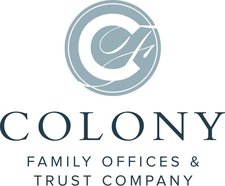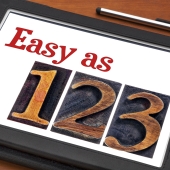SIMPLE IRA Plans
Looking for a retirement plan for your employees that's easy and inexpensive to administer? There may be a simple answer, the Savings Incentive Match Plan for Employees of Small Employers, better known as the SIMPLE IRA plan.
A SIMPLE IRA plan lets your employees defer up to $16,500 of compensation in 2025; $20,000 if age 50 or older; or $21,750 if your employees turn age 60 to 63 in 2025. You then match employee contributions dollar for dollar up to 3% of pay, or make a nonelective contribution for all eligible employees of 2% of pay. The 3% of pay match may be reduced to as little as 1% in any two of five years.
Employers may make additional non-elective contributions to all employees of up to 10% of compensation or $5,100, whichever is less. Moreover, employers with no more than 25 employees may allow their employees to contribute $17,600; $21,450 if age 50 or older; or $22,850 if age 60 to 63. Employers with 26 to 100 employees may allow higher limits as long as they provide either a 4% match or a 3% nonelective contribution.
How do I set up a SIMPLE IRA plan?
You can adopt a SIMPLE IRA plan for 2025 if you had 100 or fewer employees in 2024 (excluding employees who earned less than $5,000) and you don't contribute to any other retirement plan. To set up your SIMPLE IRA plan, follow these steps. You have until October 1 to set up a new SIMPLE IRA plan for 2025.
Adopt a written plan document: You can set up a SIMPLE IRA plan by completing either a pre-approved document provided by a financial institution (for example, a mutual fund company, insurance company, or bank) or IRS Form 5305-SIMPLE or Form 5304-SIMPLE. Form 5305-SIMPLE lets you specify the "designated financial institution" that will both act as your plan's trustee/custodian and initially receive all plan contributions. Form 5304-SIMPLE, on the other hand, lets each eligible employee select the financial institution that will serve as trustee/custodian and receive all plan contributions.
Provide information to your employees: You must provide your eligible employees with the following information before the beginning of each election period:
- An explanation of the employees' ability to make or change salary reduction elections
- Whether you'll make matching contributions or nonelective contributions for the coming year
- A summary description of the plan
- If you use a designated financial institution, a notice that employees can transfer their account balances to an IRA provider of their choice without cost or penalty
The election period is generally the 60-day period prior to the start of each calendar year (November 2 to December 31). However, the election period will be different if you set up a SIMPLE plan mid-year, or if an employee first becomes eligible after the 60-day period ends. Forms 5304 and 5305 contain most of the documents you'll need to comply with these notice requirements.
Set up employee accounts: A SIMPLE IRA account must be set up by or for each eligible employee, and all contributions to the plan must go into these accounts. In general, you must include all employees who've earned at least $5,000 (from you) during any two preceding years (whether or not consecutive) and who are expected to earn at least $5,000 in the current year.
What are some advantages of a SIMPLE IRA plan?
- SIMPLE IRA plans are not required to follow certain rules that prohibit discrimination in favor of higher-paid workers. Even if no employees want to contribute, you can establish a plan, contribute on your own behalf, and provide an employer matching contribution.
- The plan requires minimal paperwork and you aren't required to file reports with the government — only the financial institution holding the IRAs is required to file reports.
- Once your employees exercise control over the assets in their accounts, you are relieved of any fiduciary responsibility.
- Employer contributions can be flexible. You can decide each year whether you want to provide a matching contribution or a nonelective contribution.
- Your business can deduct contributions made to a SIMPLE IRA, whether you're making contributions for only yourself, or for yourself and your employees.
- You may allow contributions to be made as both pre-tax and after-tax Roth contributions. Your employees can exclude the pre-tax contributions from their gross income. While Roth contributions are not excludable from gross income, qualified distributions from Roth accounts are tax free. A qualified Roth distribution is one made after five years and the account owner reaches age 59½, dies, or becomes disabled.
- Income-tax-free rollovers or direct trustee-to-trustee transfers can be made from one SIMPLE IRA to another SIMPLE IRA at any time. A tax-free rollover from a SIMPLE IRA to a traditional IRA or to another employer plan can be made only after you've participated in the SIMPLE IRA for at least two years. (Caution: You're generally limited to one tax-free, 60-day rollover from one IRA to any other IRA — traditional, Roth, SEP, and SIMPLE — in any 12-month period.)
What are some disadvantages?
- Employer contributions are required every year.
- Your employees are vested immediately.
- You're not allowed to maintain any other employer-sponsored retirement plans.
- The annual employee deferral is more than an IRA, but significantly less than a 401(k) plan.
- Withdrawals before age 59½ are subject to a 25% early distribution penalty (unless an exception applies) during an employee's first two years of participation, and 10% thereafter, in addition to regular income tax.
SIMPLE IRA plan vs. a 401(k) plan (2025 limits)
| SIMPLE IRA | 401(k) Plan | |
| Number of employees | 100 or fewer earning at least $5,000 | Any number |
| Employee deferral limits* | $16,500; $20,000 if 50 or older; $21,750 if age 60 to 63 | $23,500; $31,000 if 50 or older; $34,750 if age 60 to 63 |
| Roth contributions? | Yes | Yes |
| Complex ERISA/tax compliance? | No | Generally yes |
| Employer contributions required? | Yes | Generally no |
| Additional employer contributions allowed?* | Yes, up to 10% of compensation or $5,100 (whichever is less) | Yes, total contribution (including deferrals) up to $70,000 or more possible |
| Loans? | No | Yes |
| Creditor protection? | Yes, in bankruptcy; unclear outside bankruptcy | Generally yes, inside and outside bankruptcy |
| Withdrawals | Unrestricted | Generally restricted |
| Early withdrawal penalty | 25% during first two years of participation, then 10% | 10% |
| Vesting schedule? | No, all contributions 100% vested | Vesting schedule permitted |
*Certain SIMPLE plans have higher limits




